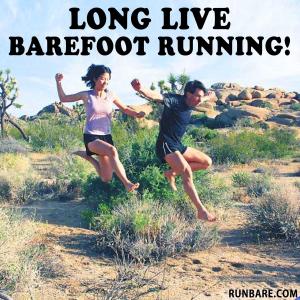 I'm here to report, contrary to what you may have read in the Wall Street Journal, barefoot Running is not dead.
I'm here to report, contrary to what you may have read in the Wall Street Journal, barefoot Running is not dead.
If it were, our children would all be born with Nikes on their feet.
But they're not, and there's a reason for it. Marketing, and dollars, always trumps what's real, what's natural, and what's hard to profit from. And yet, thousands of runners have experienced greater health, better running careers, and improved overall wellbeing by shedding their shoes.
Recently, the Wall Street Journal wrote an article, 'Barefoot' Running Heads Into the Sunset: After Initial Burst, Thin-Soled Shoes—Some Looking Like Gloves—Lose Steam.
Now I'm not typically one to comment on articles on whether barefoot running is good or bad, that's really up to each individual. But I thought I'd take a look at this article in particular, to try and shed some light on what's really going on. In short, the article isn't about whether barefoot running is good or bad, but whether minimalist running shoes are making a lot of money or not.
With that said, the first, and most important thing, is that the article misses the point entirely. Barefoot Running was never about what shoes you wear...it's about, GOING barefoot. Or as Christopher McDougal says in a second WSJ article on a lawsuit against Vibram, "When did I ever say, 'buy shoes'? Never."
Barefoot running may never be trendy, it may never be the hippest way to run, but it very well may be the kindest, gentlest way on your body. But that's really up to you. In the article, it talks about people getting blisters and sore calves. Well guess what, they're right, if you don't start slowly enough. That's why I go on in all of our books, talks, clinics, retreats, and in our DVD and video series about starting slowly. I cannot emphasize this enough. You can't change your stride, even to a more "natural" stride, (meaning one where your body tells you what to do and how to land, rather than your footwear dictating it to you), without going slowly.
ONLY 200 YARDS. That's what I tell everyone, everywhere, all of the time. You start with 100-200 yards max, and increase by 100 yards every other time.
Where people get into trouble, is when they try to make the transition in footwear, such as the FiveFingers. Now those shoes are fun, but they can actually be WAY too much fun in the beginning. Because they help you run with a bit more natural of a stride, BUT without the full feedback you get from the ground (aka you can still "cheat" and heel strike in them and get away with it, something you'd NEVER do fully barefoot) and because they protect your skin.
Weak skin is perhaps natures second greatest protection mechanism, right behind PAIN sensors. Pain sensors stop us, and weak skin quickly brings us to the point of pain, which stops us too. Protect the foot with rubber, any rubber, and we veto this mechanism, or blindfold our senses.
Trick is, the weak skin is protecting the muscles, ligaments, tendons, and even bones on the inside. If we want to switch, we need to give EVERY part of the foot and leg time to catch up with our new stride.
And that's where we come back to the article. The article's not about barefoot at all, but about footwear, and really about DOLLARS. I hate to say this, but footwear manufacturers do NOT have your best interest in mind. Think I'm wrong. Look at your shoes, chances are they come to a point in the middle...yet no-one no-where, ever has a third toe that's longer than all the rest. They did this for fashion, because a tapered shoe presumably looks fast, and looks cool.
The footwear industry is about fashion trends. When there was money to be made in a new trend "minimalism" they were all over it, and rode it for all they could get...not informing customers that they needed to start slowly, or looking at what minimalist shoes worked and which didn't (we saw lots of shoes that actually HURT people more than their overbuilt counterparts). And now that minimalism has run it's course, they're working on maximalism, trying to get the most cushioned shoe out there, saying minimalism didn't work.
It's a dangerous swing of the pendulum, a bunch of marketing hype designed to get money from you, the consumer. They want in your wallet, not just in your shoes. Unfortunately, the consumer (and your feet) gets hurt by all of this.
Which is why I want you to step back, look at the hype, and try to figure out what's best for you.
Now I'm not saying go barefoot all of the time. Heck, I don't do that...though I certainly prefer it. But what I am saying, is that barefoot running is an amazing tool to get you healthy, and help keep you healthy...and more connected to nature. It also helps you run with a quieter mind, or in more of a mindful state as you run. You can do this too in a shoe, but it's much more difficult. So spend time out of your shoe training, growing strong, learning the best stride, and then you can carry that back into a shoe.
Jessica chimes in here: "Barefoot running helps you learn YOUR most natural stride which is unique to YOUR body...no running expert out there anywhere would argue we all should have the same stride, to the contrary, they call it an "experiment of one". So how do you learn your own stride, by feeling it out, feeling the ground and seeing what feels best. Then you can carry back into a shoe."
But look for the most NATURAL fitting shoe possible. There are still a few out there, and if we keep buying them, hopefully more will still come to market, just don't expect them from the major shoe manufacturers, at least for a while, but that's okay. Let's support the little guys who are the true innovators out there!
I'll be going into detail in an upcoming post on what to look for in a shoe, but here are 5 quick tips:
1. Look for shoes with the widest toe-box possible, one that isn't tapered in at the front, or doesn't come to a point.
2. Look for shoes that are FLAT and close to the ground, preferably with as much flex to the sole as possible.
3. Look for shoes that have NO high heel (this kind-of goes with the above).
4. Look for shoes that have no arch support, or that don't inhibit the movement of your arch in any way. (Often arch support is hidden by making a shoe NARROW or pinched together in the middle. Flip the shoe over, if it tapers in the middle, then when you lace up, the material will wrap up and around your foot and voila, hidden arch support.)
5. Look for shoes that don't have funny multi-direction or asymmetrical tread patterns on the bottom of the shoes. These cause your feet to go where the shoe wants them to go, not where YOU want your feet to go...often resulting in shin splints, IT band syndrome, or a general pain in the knee.
Overall, look for the most moccasin-like shoe possible. That's a design that's stood the test of time for THOUSANDS of years over the most challenging terrain possible. The more your shoes are moccasin-like, meaning flexible, close to the ground, wide all around, and floppy, the more it'll let your foot move like a foot. That's what I'm personally looking for in a shoe, how naturally does it let my foot move. And how naturally can I run in them.
Whether you're a full-time barefoot runner, or just dabbling to get yourself stronger, remember, let your skin and your body be your guide. If something doesn't feel right, in or out of a shoe, rest, and then try something different. Always make small, incremental changes, listen carefully to your body, and have fun!
More soon from RunBare headquarters. Listen to your footsteps, dance out on those trails, have fun, and Run Bare!
With blessings,
Michael Sandler and Jessica Lee
(Your RunBare Team)

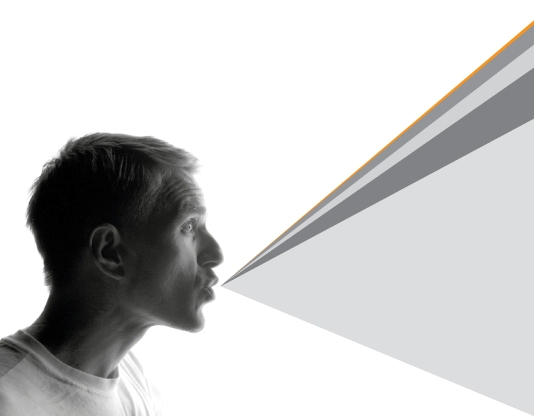
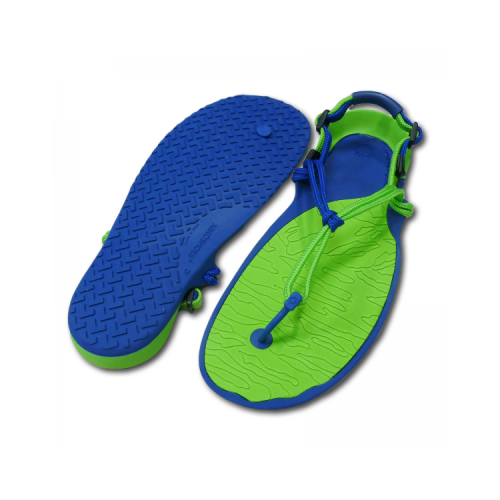 I must admit I'm in love. Or at least, I'm in like at first sight. As a die-hard barefoot runner who's been kicked out of more places than you can imagine (including one Whole Foods in Boulder, where the security guard literally had his hand on his gun,) it's hard to get me into a shoe, ANY shoe.
I must admit I'm in love. Or at least, I'm in like at first sight. As a die-hard barefoot runner who's been kicked out of more places than you can imagine (including one Whole Foods in Boulder, where the security guard literally had his hand on his gun,) it's hard to get me into a shoe, ANY shoe.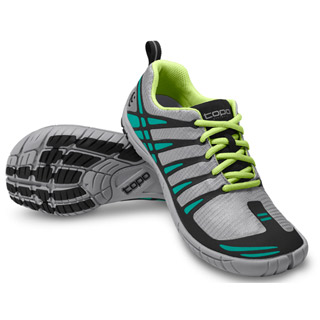 And speaking of giving things a go. Jessica tried out the Topo ST's on the run. Now she's a LOT faster than me (understatement) as a 4 x 400 state champion in high school. Her get up and go is something truly special!
And speaking of giving things a go. Jessica tried out the Topo ST's on the run. Now she's a LOT faster than me (understatement) as a 4 x 400 state champion in high school. Her get up and go is something truly special!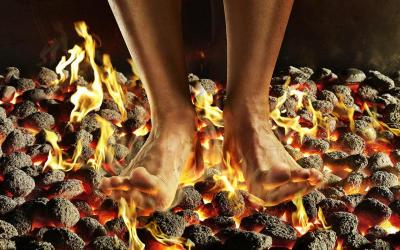
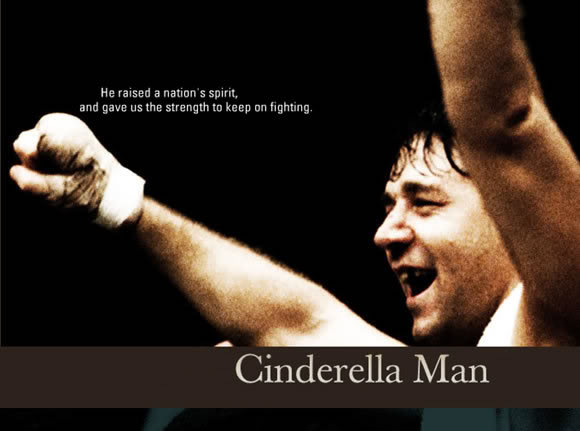 I was just watching the movie Cinderella Man about the unexpected come back of James Braddock for the heavyweight title of the world in 1935. In 1934, completely untrained and having lost his license to fight after a series of terrible bouts, he was brought back out of retirement to fight the #2 contender in the world, since no one else could fight on no notice. And guess what, he WON.
I was just watching the movie Cinderella Man about the unexpected come back of James Braddock for the heavyweight title of the world in 1935. In 1934, completely untrained and having lost his license to fight after a series of terrible bouts, he was brought back out of retirement to fight the #2 contender in the world, since no one else could fight on no notice. And guess what, he WON.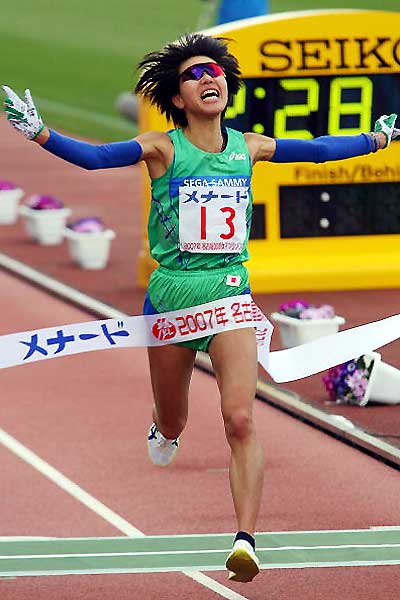 I remember one of my good friends, Yasuko Hashimoto, went from a severe knee injury and forced time off, to walking obscene distances (up to 8 hours a day) before running again on an underwater treadmill and then only two months later WINNING the big marathon and qualifying and going to the World Championships. It was unbelievable, until you looked at what she did. She rested, recovered, and worked on every other aspect of her body. I know because I trained with her.
I remember one of my good friends, Yasuko Hashimoto, went from a severe knee injury and forced time off, to walking obscene distances (up to 8 hours a day) before running again on an underwater treadmill and then only two months later WINNING the big marathon and qualifying and going to the World Championships. It was unbelievable, until you looked at what she did. She rested, recovered, and worked on every other aspect of her body. I know because I trained with her.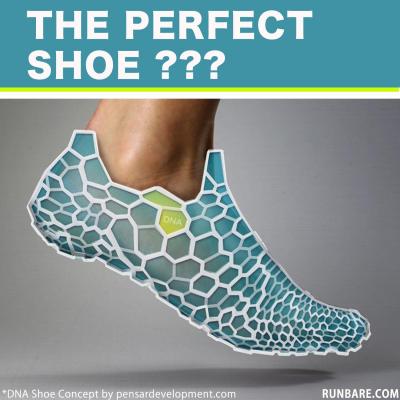 I must admit, today's a pretty exciting day. It's the first time in over a year we'll be getting in new "natural" footwear to test for our readers. Though we're not big fans of most footwear, it always feels like Christmas when new shoes start coming in. Today I believe we'll get in the Topos, or the minimalist shoes envisioned by Tony Post, former CEO of Vibram, who (along with Born to Run and Barefoot Ted) helped spearhead FiveFingers. Our goal: We want to test anything out there that will help runners keep their natural form, while giving protection to the foot. Ultimately, that's what we see footwear as, protection for our soles.
I must admit, today's a pretty exciting day. It's the first time in over a year we'll be getting in new "natural" footwear to test for our readers. Though we're not big fans of most footwear, it always feels like Christmas when new shoes start coming in. Today I believe we'll get in the Topos, or the minimalist shoes envisioned by Tony Post, former CEO of Vibram, who (along with Born to Run and Barefoot Ted) helped spearhead FiveFingers. Our goal: We want to test anything out there that will help runners keep their natural form, while giving protection to the foot. Ultimately, that's what we see footwear as, protection for our soles. I'm here to report, contrary to what you may have read in the Wall Street Journal, barefoot Running is not dead.
I'm here to report, contrary to what you may have read in the Wall Street Journal, barefoot Running is not dead.